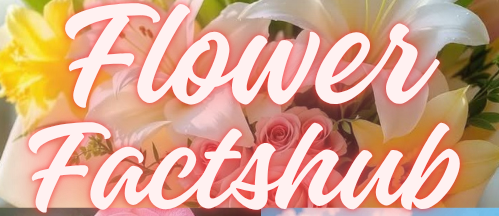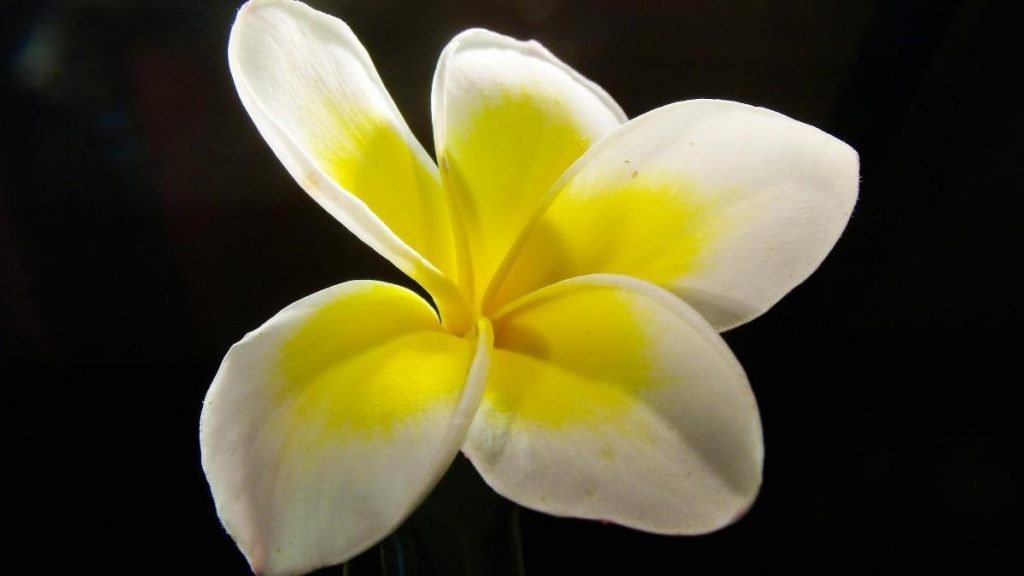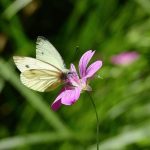People often call Hawaii the ‘Aloha State’ because it boasts breathtaking landscapes, stunning beaches, a rich culture, and a mesmerizing array of flowers. Hawaiian flowers are more than just beautiful. They are symbols of the islands’ unique history, culture, and natural beauty. From the iconic hibiscus to the delicate plumeria, the islands boast an impressive variety of blooms that brighten the environment and lift the spirits.
In this blog post, we’ll take a deep dive into the enchanting world of Hawaiian flowers. Whether you’re planning a visit to Hawaii, hoping to grow these flowers in your own garden, or simply fascinated by the colorful beauty of these tropical plants, this comprehensive guide is for you. Let’s explore the vibrant world of Hawaiian flowers, their cultural significance, and practical tips for growing them.
What makes Hawaiian flowers so unique and captivating?
Hawaiian flowers are unique for their vibrant colors, exotic shapes, and rich cultural meaning. Often used in leis and traditional ceremonies, these blooms like hibiscus, plumeria, and orchids reflect the spirit of aloha and bring a sense of tropical magic wherever they grow.
The Cultural Significance of Hawaiian Flowers
Hawaiian flowers are an integral part of Hawaiian culture, carrying significant meaning and symbolism. For centuries, flowers have been used in ceremonies, leis, and everyday life. They are not only admired for their beauty but also for the messages they convey.
Leis and Hawaiian Flowers
A lei, a traditional Hawaiian necklace made from flowers, is one of the most recognizable symbols of Hawaiian culture. It’s typically given as a gesture of love, friendship, or respect. The flowers used in leis have deep meanings. For example, the plumeria symbolizes love and positivity, while the orchid represents beauty, luxury, and strength.
The art of making leis dates back to ancient Hawaii, and today, leis are still an essential part of Hawaiian life, given during celebrations, graduations, and important events.
Symbolism and Meaning
Hawaiian flowers often symbolize specific emotions or occasions. The hibiscus, the state flower of Hawaii, symbolizes delicate beauty and women often wear it in their hair as a symbol of beauty and femininity. Similarly, the bird of paradise symbolizes joy, freedom, and optimism, which is why people commonly use it in Hawaiian home decor and bouquets
10 Most Popular Hawaiian Flowers You Should Know
There are many flowers native to Hawaii, but some have gained international recognition due to their striking appearance and prevalence across the islands. Below are 10 of the most beloved Hawaiian flowers:
1. Hibiscus (Hibiscus rosa-sinensis)
Arguably the most famous Hawaiian flower, the hibiscus is bold, vibrant, and instantly recognizable with its large, trumpet-shaped blooms. Hibiscus flowers come in a variety of colors, including red, yellow, pink, and white. In Hawaiian culture, the hibiscus represents delicate beauty, and it’s commonly worn by women to signal their relationship status—on the left side if they are taken, and on the right if they are single.
Practical Tip: To grow hibiscus in your garden, ensure it has full sun exposure and well-drained soil. It requires regular watering and occasional pruning to maintain its shape.
2. Plumeria (Frangipani)
Plumerias are another iconic Hawaiian flower that exudes a sweet, intoxicating fragrance. These delicate flowers are often used to create leis, and their beauty is a hallmark of Hawaiian landscaping. Plumeria flowers bloom in a range of colors, including white, pink, yellow, and red, and they have five petals that create a star-shaped bloom.
Practical Tip: Plumerias prefer warm, sunny conditions and well-draining soil. They are drought-tolerant once established but should be watered regularly during their growing season. Prune dead wood to encourage new growth.
3. Bird of Paradise (Strelitzia reginae)
The bird of paradise flower is one of the most striking tropical flowers found in Hawaii. It features vivid orange and blue petals that resemble the head of a bird in flight. This flower is symbolic of joy, freedom, and optimism, making it a popular choice for Hawaiian bouquets and home decor.
Practical Tip: Bird of paradise plants require well-drained soil and full sun exposure to thrive. They can tolerate periods of drought but will produce better blooms when watered consistently.
4. Orchids (Cattleya, Dendrobium, and Vanda)
Hawaii is home to many species of orchids, and these flowers are a symbol of beauty, strength, and luxury in Hawaiian culture. Orchids are often used in leis and come in a wide variety of colors and shapes, from the delicate Cattleya to the vibrant Vanda orchids.
Practical Tip: Orchids are typically epiphytic (growing on trees) in their natural habitat, so they need a humidity level of at least 50% to thrive. They also prefer indirect sunlight and should be watered regularly but not overwatered.
5. Ti Plant (Cordyline fruticosa)
The Ti plant is an important flower in Hawaiian culture, often used in religious ceremonies and as an offering to the gods. The plant features large, glossy leaves, and its flowers are small but elegant. It’s also thought to bring good luck and protection.
Practical Tip: Ti plants thrive in shaded or partially sunny areas. They prefer well-drained, slightly acidic soil and can be grown both indoors and outdoors.
6. Ginger (Zingiberaceae)
Hawaiian ginger flowers, especially the red and yellow varieties, are known for their fragrant and vibrant blooms. The ginger plant has broad, green leaves and produces unique, spiky flowers that resemble a spiral cone.
Practical Tip: Ginger plants need partial shade and well-drained, moist soil to grow well. They also require regular watering, especially during their growing season.
7. Pikake (Jasminum sambac)
The pikake flower, also known as the Hawaiian jasmine, is known for its powerful fragrance. It produces small, white flowers that are often used in leis and bridal bouquets. The pikake is symbolic of love and beauty.
Practical Tip: Pikake plants thrive in full sun and well-drained soil. They are quite low-maintenance but will need regular pruning to maintain their shape and prevent them from becoming too woody.
8. Ohia Lehua (Metrosideros polymorpha)
The ohia lehua flower is native to Hawaii and is known for its vibrant red, orange, or yellow blooms. It is often seen in highland areas and is considered sacred to the Hawaiian people. The flower is also the subject of many Hawaiian myths and legends.
Practical Tip: Ohia lehua trees grow best in volcanic soil with good drainage. They can handle dry conditions once established but will need regular watering when first planted.
9. Heliconia (Heliconia spp.)
Known for their bold and exotic appearance, heliconias are tropical plants that have bright, colorful flowers that resemble birds of paradise. These flowers come in a variety of colors, including red, orange, and yellow, and they are often used in Hawaiian floral arrangements.
Practical Tip: Heliconia plants thrive in full sun to partial shade and need rich, moist soil. They also require regular watering, especially during their growing season.
10. Antherium (Anthurium andraeanum)
People recognize the anthurium flower for its shiny, waxy petals and vibrant colors, which range from red and pink to white and purple. They often use it in Hawaiian floral arrangements to symbolize hospitality.
Practical Tip: Anthuriums thrive in indirect sunlight and humid environments. They need well-drained soil and should be watered consistently but not overwatered.
How to Grow Hawaiian Flowers at Home
If you’ve fallen in love with Hawaiian flowers and want to add a touch of the islands to your garden, here are a few essential tips to get you started.
1. Choose the Right Plants for Your Climate
Before choosing which Hawaiian flowers to grow, make sure they are suited to your local climate. Many Hawaiian flowers are tropical plants, so they need warm temperatures, ample sunlight, and humidity to thrive. Some plants, like flummeries and hibiscus, can tolerate slightly cooler climates, but others, such as orchids and ginger, require more tropical conditions.
2. Plant in Well-Drained Soil
Hawaiian flowers generally prefer well-drained soil that allows water to flow freely. Standing water can lead to root rot, so ensure that your garden beds or containers have proper drainage.
3. Provide Plenty of Sunlight
Most Hawaiian flowers love the sun. Make sure to plant your flowers in a location where they will receive ample sunlight. Aim for at least 6 to 8 hours of direct sunlight per day.
4. Water Regularly but Don’t Overwater
While Hawaiian flowers need plenty of water, they do not like to be soggy. Water your plants deeply but allow the soil to dry out slightly between watering. Be mindful of your plants’ specific water requirements.
5. Fertilize During the Growing Season
To encourage healthy growth and vibrant blooms, fertilize your Hawaiian flowers during their growing season. Use a balanced, slow-release fertilizer and follow the recommended application instructions.
6. Prune Dead or Damaged Growth
Pruning helps maintain the shape and health of your Hawaiian flowers. Remove dead or damaged growth to encourage new blooms and to prevent disease.
How to Use Hawaiian Flowers in Everyday Life
1. Create Your Own Lei
- Materials Needed: Fresh flowers (plumeria, orchids), fishing line, and a needle.
- Method: String blooms together, knotting between each flower.
2. Decorate with Tropical Floral Arrangements
- Tip: Pair bold flowers like anthurium with greenery for a striking centerpiece.
3. Wear Flowers in Your Hair
- Right Side: You’re single.
- Left Side: You’re taken.
- Behind the Ear: Welcoming and friendly.
4. Make Hawaiian Flower Perfume or Oil
- DIY Idea: Infuse coconut oil with pikake or plumeria petals for a tropical scent.
Where to Buy Hawaiian Flowers
- Online: Websites like Hawaii Flora, Tropical Flowers of Hawaii.
- Local Nurseries: Look for tropical plant sections.
- Hawaiian Farmers’ Markets: If visiting, buy fresh leis directly from growers
Final Thoughts
Hawaiian flowers are a stunning reflection of the islands’ rich natural beauty and cultural heritage. From the graceful plumeria to the bold hibiscus, these flowers are more than just decorative they are symbols of love, friendship, and Aloha spirit. Whether you’re growing them in your garden or wearing them as part of traditional lei, Hawaiian flowers bring a touch of paradise into any setting.
By following these practical tips, you can bring a piece of Hawaii’s colorful flora into your own life and home. So, why not start planting today? Soon, vibrant, fragrant blooms will surround you and fill the air with the unforgettable essence of Hawaii. Aloha!
Frequently Asked Questions (FAQs)
Q1: What are some of the most iconic Hawaiian flowers?
Some of the most famous Hawaiian flowers include plumeria, hibiscus, bird of paradise, orchids, anthurium, and pikake (jasmine).
Q2: What is the official state flower of Hawaii?
The yellow hibiscus (Hibiscus brackenridgei), also known as Pua Aloalo, is Hawaii’s official state flower.
Q3: Why are Hawaiian flowers considered magical or special?
People admire Hawaiian flowers for their vibrant colors, exotic shapes, cultural symbolism, and connection to traditional leis and rituals.
Q4: What flower is commonly used in Hawaiian leis?
Plumeria, orchids, pikake, and tuberose are frequently used in leis for their beauty and fragrance.
Q5: Can I grow Hawaiian flowers at home?
Gardeners can grow many Hawaiian flowers in tropical or warm climates, or indoors in pots and greenhouses in cooler areas.



